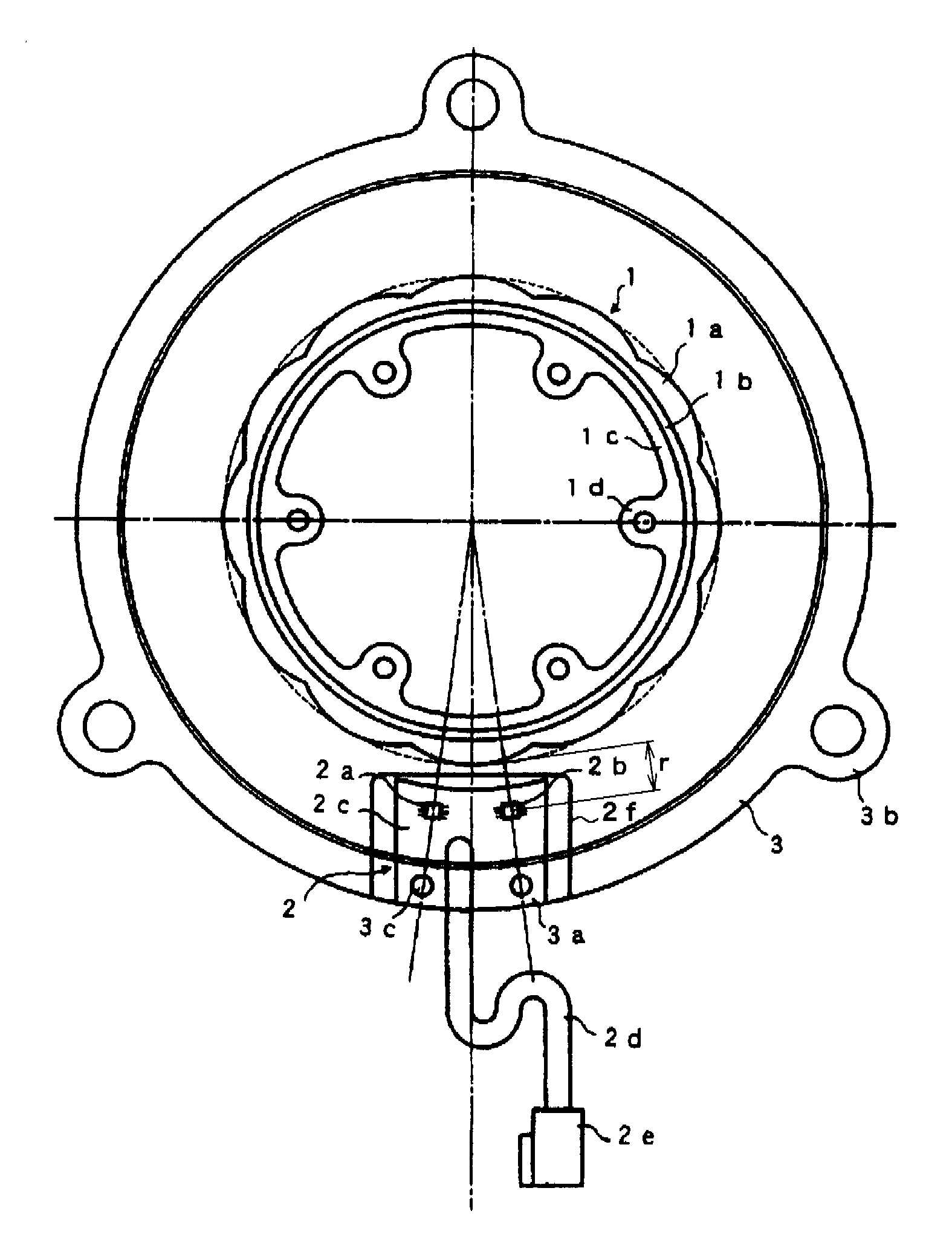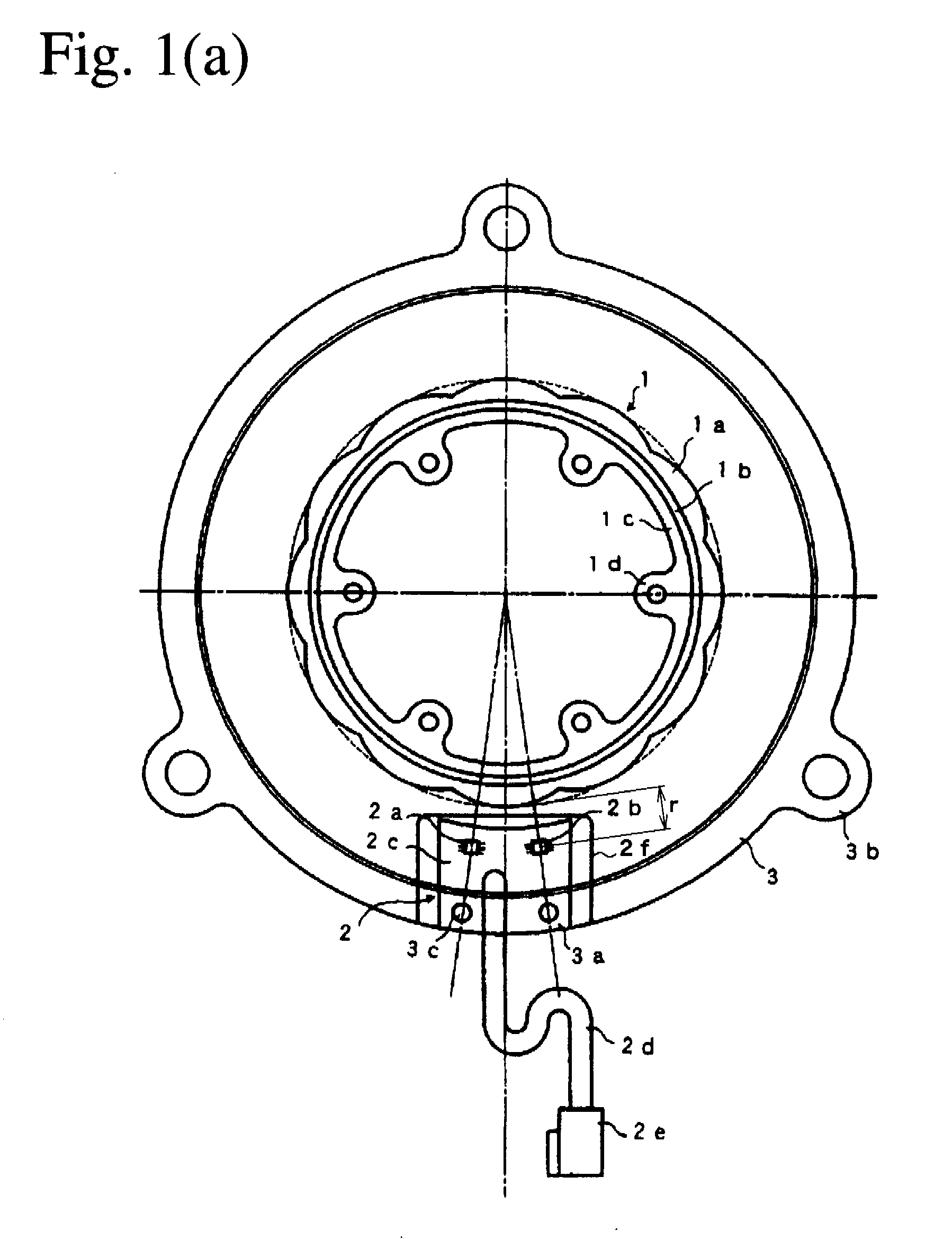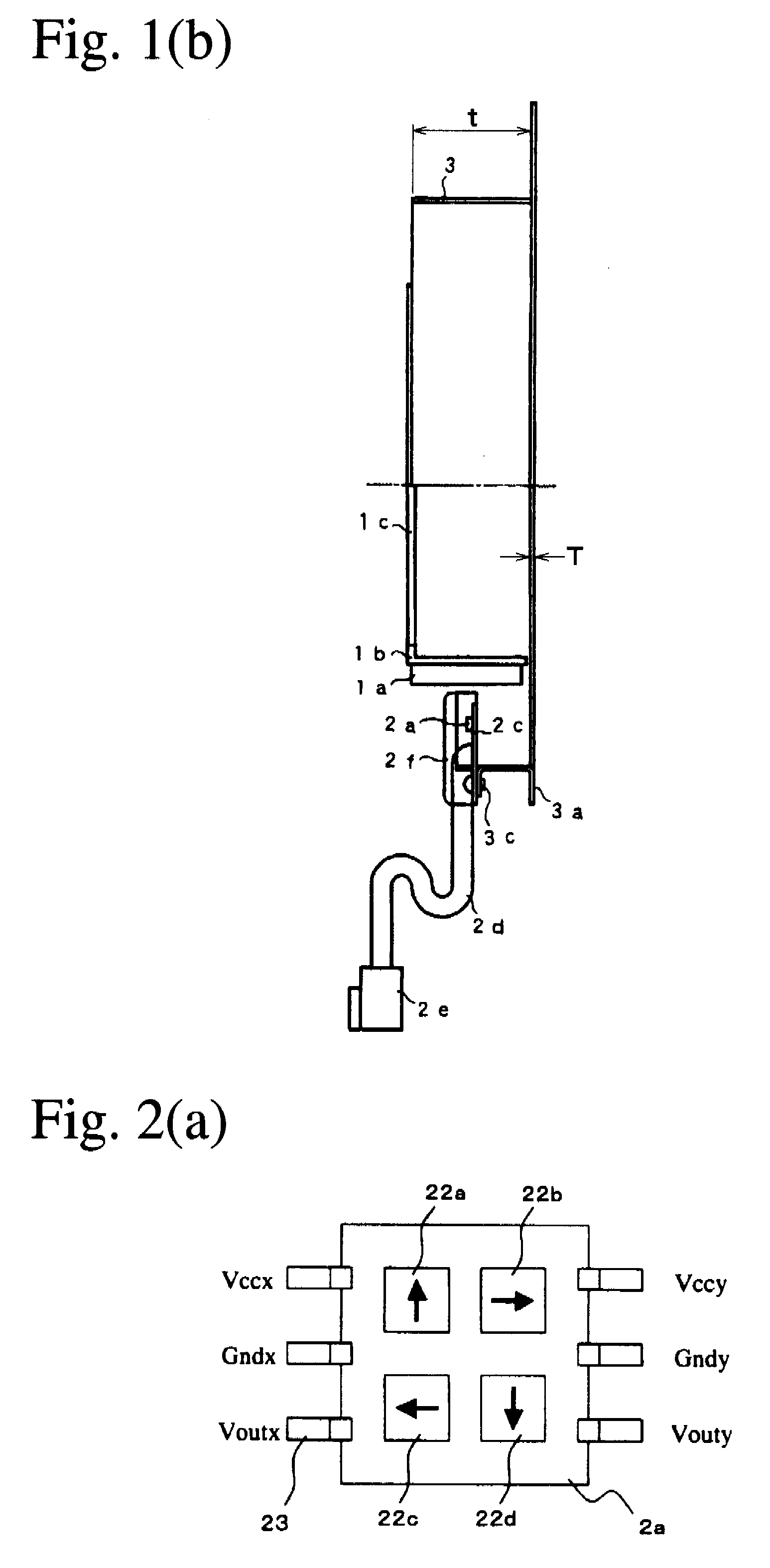Rotation-angle-detecting apparatus, rotating machine, and rotation-angle-detecting method
a technology of rotating machines and detecting apparatus, which is applied in the direction of magnetic measurements, instruments, measurement devices, etc., can solve the problems of reducing the accuracy of the rotation angle, the inability to detect the rotation angle with high accuracy, and the drastic decrease of the element. achieve the effect of higher accuracy
- Summary
- Abstract
- Description
- Claims
- Application Information
AI Technical Summary
Benefits of technology
Problems solved by technology
Method used
Image
Examples
example 1
[0270]As shown in FIGS. 1(a) and 1 (b), the first rotation-angle-detecting apparatus of the present invention comprises a magnet rotor 1, a magnetic sensor means 2 arranged outside a periphery of the magnetic rotor, and a housing 3 supporting the magnetic sensor means 2. The magnet rotor 1 comprises a ring-shaped permanent magnet 1a having a periphery in a shape formed by connecting pluralities of arcs, a soft-magnetic ring 1b integrally formed on an inner surface of the ring-shaped permanent magnet, and a non-magnetic, ring-shaped adaptor 1c supporting the soft-magnetic ring. The magnetic sensor means 2 comprises a planar circuit board 2c having a concaved surface facing the magnet rotor 1, a pair of sensor devices 2a, 2b fixed onto the circuit board 2c, a cable 2d and a connector 2e for electrically connecting the sensor devices and the circuit board 2c to a control circuit, and a non-magnetic cover 2f sealing the sensor devices. Each sensor device 2a, 2b has two laminated, spin-v...
example 2
[0284]The second rotation-angle-detecting apparatus of the present invention was produced like the first rotation-angle-detecting apparatus of Example 1, except that the sensor devices 2a, 2b shown in FIGS. 2(a) to 2(d) were changed to resin-molded sensor devices 12a, 12b comprising eight spin-valve, giant-magnetoresistive devices for constituting two full bridge circuits, and 10 terminals 23 formed from a non-magnetic leadframe as shown in FIGS. 9(a) to 9 (f). Even when the distance r shown in FIGS. 1(a) and 1(b) was increased to 10 mm, the apparatus could be used without any trouble. Even when the magnet rotor 1 had a thickness t of 5 mm, there was no trouble, either.
[0285]As shown in FIG. 9(a), one sensor device 12a comprises 8 spin-valve, giant-magnetoresistive devices, each of which has a pinned layer whose magnetization direction is oriented in an X, Y, −X, or −Y direction. A thick arrow in the figure represents a magnetization direction of the pinned layer in one element. Fou...
example 3
[0291]FIGS. 12(a) and 12(b) show another example of the rotation-angle-detecting apparatuses of the present invention comprising a magnet rotor 1 having two magnetic poles on the circumferential surface, and a housing 3 to which a magnetic sensor means 21 supporting a sensor device 12a and a magnetic sensor means 22 supporting a sensor device 12b are fixed. A point O represents a rotation axis of the magnet rotor 1. The two sensor devices 12a, 12b are 90° separate from each other. With the sensor devices 12a, 12b each having two spin-valve, giant-magnetoresistive devices whose pinned layers have magnetization directions perpendicular to each other, the rotation angle of a ring-shaped permanent magnet 1a on the magnet rotor 1 can be detected.
[0292]The magnet rotor 1 comprises the ring-shaped permanent magnet 1a, a soft-magnetic ring 1b integrally formed on an inner surface of the ring-shaped permanent magnet, and a non-magnetic, ring-shaped adaptor 1c supporting the soft-magnetic rin...
PUM
 Login to View More
Login to View More Abstract
Description
Claims
Application Information
 Login to View More
Login to View More - R&D
- Intellectual Property
- Life Sciences
- Materials
- Tech Scout
- Unparalleled Data Quality
- Higher Quality Content
- 60% Fewer Hallucinations
Browse by: Latest US Patents, China's latest patents, Technical Efficacy Thesaurus, Application Domain, Technology Topic, Popular Technical Reports.
© 2025 PatSnap. All rights reserved.Legal|Privacy policy|Modern Slavery Act Transparency Statement|Sitemap|About US| Contact US: help@patsnap.com



